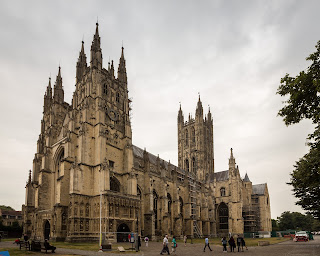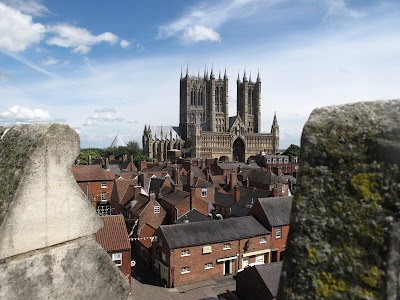Mitres, the Magna Carta and a Medieval Murder...
Our 'journey' begins in Canterbury, site of the oldest cathedral in the UK.
Established in 597AD by St Augustine, a missionary sent to England from Rome by Pope Gregory the Great, this incredible building has been a place of Christian worship since the Roman occupation of Britain and remains the oldest church in England still in use.
The word 'cathedral' comes from the Greek word for seat - 'kathedra' and the Latin word for 'chair'. St Augustine established his 'chair' as the first Archbishop of Canterbury, a post held by 105 successors up to the present Most Revd Justin Welby - and head of the Anglican church.
The grand Cathedral we see today is the result of many major renovations and additions, being extensively enlarged by the Saxons and following a major fire in 1070, completely rebuilt by the Normans. However, the remains of Augustine's original building lie preserved beneath the Nave.
Once occupied by monks, holding substantial archival records and now boasting a modern international study centre, a quick visit to the Cathedral's website gives more information and detail on its 1400 year history and is well worth a look.
Canterbury Cathedral is also famed for its link to the Magna Carta when the 13th century Archbishop, Stephen Langton played his part in the negotiations preceding the charter of liberties being signed by King John in 1215. Canterbury became one of the "Five Magna Carta Towns" within England and one of the two copies of the Magna Carta held within the British Library is indeed that from Canterbury Cathedral.
Today Canterbury Cathedral is one of the most famous pilgrimage sites in Europe due to its link to its most famous Archbishop, Thomas Becket, and his murder within the cathedral itself. King Henry II was complicit in his assassination in 1170 following a long dispute between Crown and Church. Shortly after the murder an extraordinary wave of miracles began to appear and Becket's reputation as a miracle-working saint spread far and wide and very soon visitors began to arrive from all over Europe with the hope of being healed. Pilgrims continue to flock to the site to this day.
Chaucer's 'Canterbury Tales' capture something of these pilgrimages.
All in all a most interesting and fitting place to start our own virtual pilgrimage as we make our way up through the UK stopping off at many more places of worship, history and beauty en route.
Our next stop is St Paul's, some 55.3 miles away. We do hope you will 'journey' with us - 'see' you there!...





Excellent. Love the video!
ReplyDelete